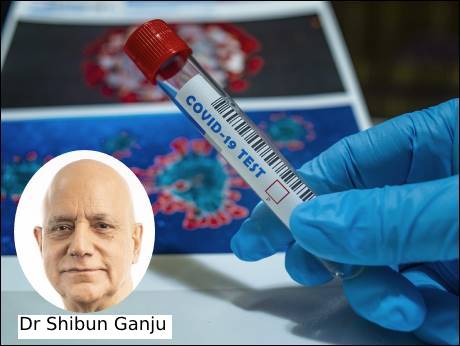
By Dr. Shiban Ganju, Chairman, Atrimed Pharmaceuticals Pvt Ltd and Save-A-Mother Foundation Bangalore
May 17 2020: Development experts have emphasized that health and livelihood form the foundation of human development. Corona has reemphasized the axiom, that right to health is impotent without a right to livelihood.
The lockdown offers us an opportunity to reexamine the axiom. Let us dust off some old, important documents: National Health Policy of 2002, report of the High level Expert Committee of 2010, National Health Policy of 2017 and The Lancet of January 2011. One recommendation reverberates through all the documents: government should increase spending on healthcare to 2.5 or 3 percent of the GDP. The Lancet even took a wishful leap to espouse healthcare for all by 2020. What we got instead is Corona for all, as if to expose our underfunded public health system. Our spending on healthcare has been stuck at approximately 1 percent of GDP for over 20 years. Experts have failed to convince the policy implementers. We hope, that the eerie silence of the virus will be more persuasive than the expert noise.
The virus could argue the case from a different perspective: that healthcare is a GDP driver. Healthcare currently contributes 4 percent to the economy; it has a potential to contribute up to 10 percent, as in many western countries. The WHO, the World Bank, OECD have also endorsed healthcare as a poverty reduction strategy. Healthcare could create jobs and that too of green variety. That is not to ignore another desirable side benefit: healthy labor improves productivity.
Healthcare is among the largest employers in the world. In India, healthcare employs 20.6 people for a population of 100,000, but 60 percent of the work force cares for 30 percent of the urban population. And the remaining 40 percent caters to the 70 percent rural population. This skewed distribution offers an opportunity to accelerate economic activity in rural areas.
We have many ways to implement it. Let us illustrate by one example: suppose we build hospitals in the 200 poorest of 736 Indian districts. It will create construction jobs now and permanent jobs later. With an average of 500 beds per hospital, we could add one lakh new beds. Each hospital bed generates direct and indirect employment for 8 people, which translates into 8 lakh jobs.
These hospitals could be located near district head-quarters, where it is relatively easier to attract doctors, nurses and technicians, than in the hinterland. On free government land, the cost of building a modern hospital with advanced medical equipment, will be INR 20 lakhs per bed. The total cost for 200 hospitals will be 20 thousand crores, spread over five years or 0.02% of the five year GDP. This investment could even be reassigned from multiple funding sources already in the budget, like MNREGA, MP, MLA funds, Ayushman Bharat and NHM. We could even harness money by putting a temporary halt to all ornamental, non-revenue generating urban construction.
The hospital purchases and other transactions could generate revenue for the government through GST and other taxes. A monthly average of approximately INR 700, pro-rated per employee, generated as a consequence of hospital business and personal transactions, could pay back the investment in 30 years.
These hospitals could become hubs for frugal innovations in healthcare. As private-public- partnership, the start-up entrepreneurs could be assured a captive market of 200 hospitals to sustain them in return of profit sharing.
An extra expenditure of a mere 0.02% of five year GDP illustrates the effect of healthcare on livelihood. If this is not convincing enough, we could fall back on the original lofty aim of healthcare, that one preventable death is one too many.
Corona begs us to press the reset button.